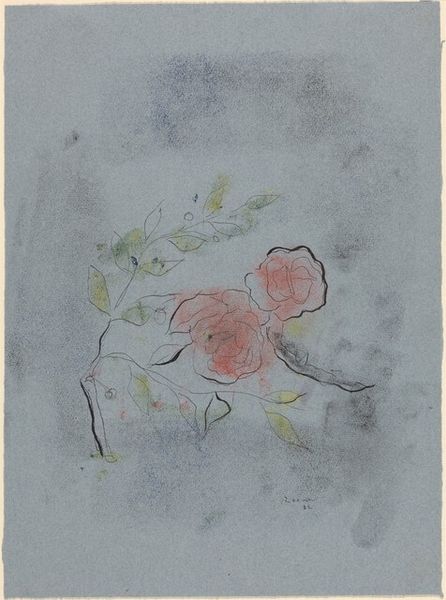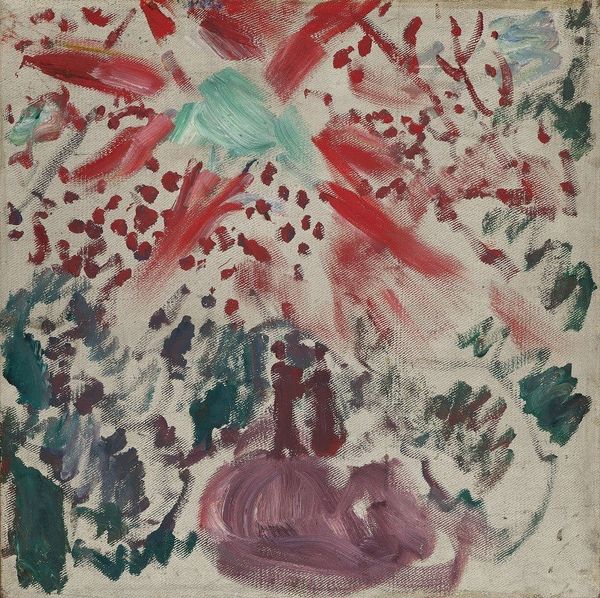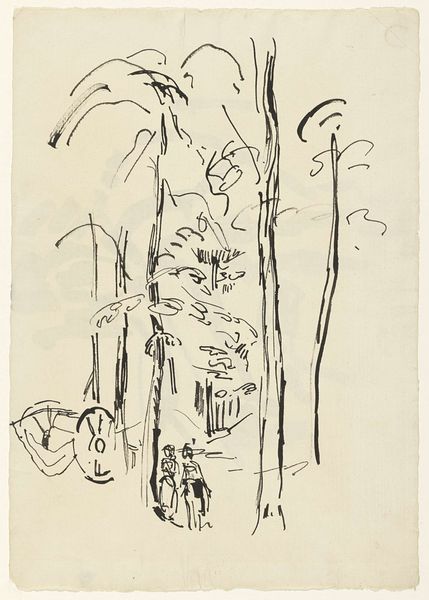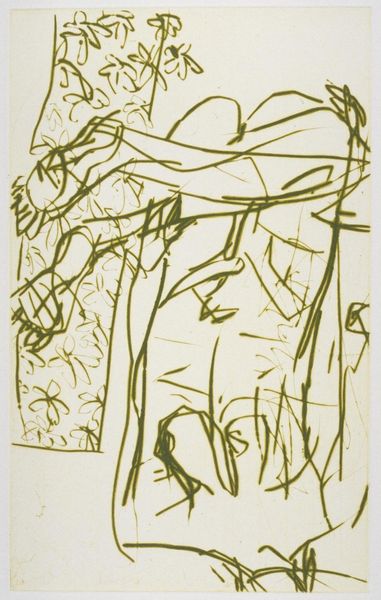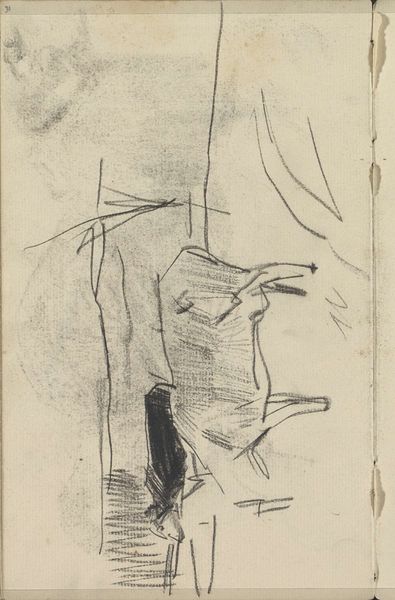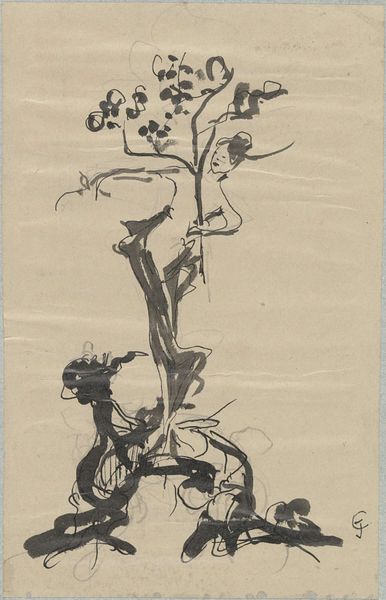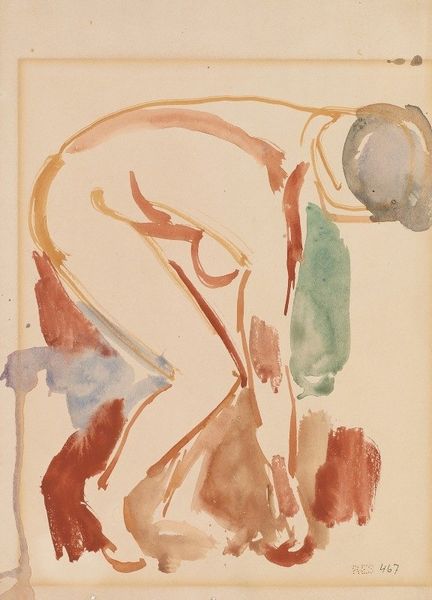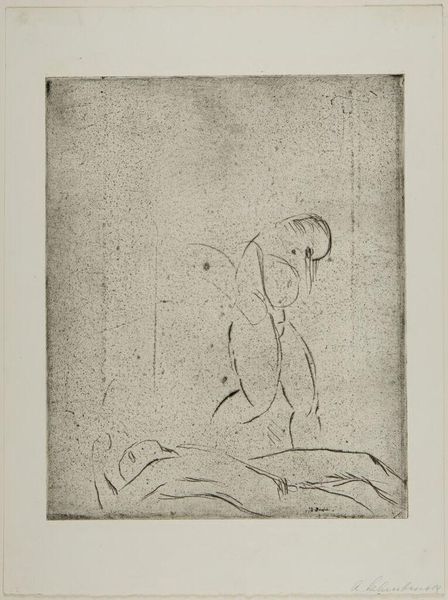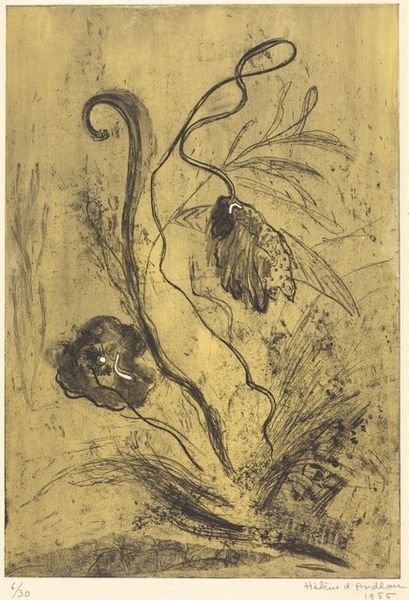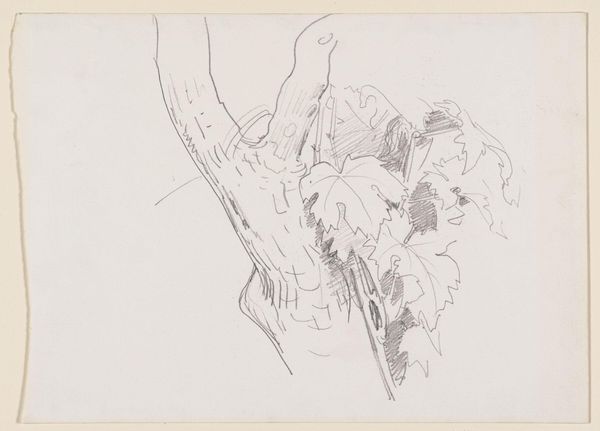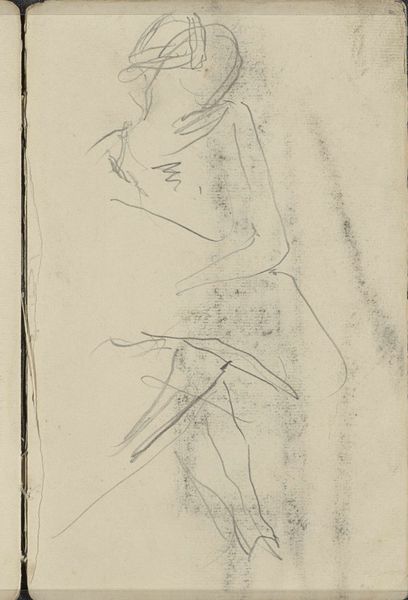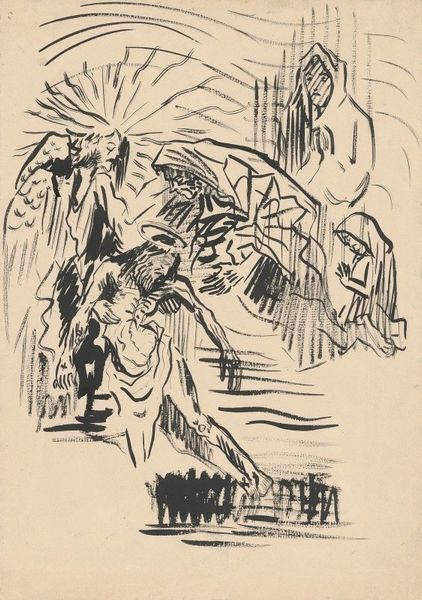
mixed-media, print, monoprint, woodcut
#
mixed-media
#
narrative-art
# print
#
landscape
#
figuration
#
monoprint
#
expressionism
#
woodcut
#
symbolism
#
mixed medium
Copyright: Public Domain: Artvee
Editor: This is Edvard Munch’s "Blossom of Pain" from 1898. It's a mixed media piece, using woodcut and monoprint techniques. The colors are muted and the composition is quite unsettling. What's your interpretation of this work? Curator: This image vibrates with the anxieties of its time. Look at the female figure – her pose is vulnerable, almost defeated. The blossom, while beautiful, is isolated, disconnected. It suggests a fractured relationship between femininity and nature. What feelings does the figure evoke in you? Editor: I sense a feeling of confinement, or being trapped. Is it reflective of the social expectations placed on women at the end of the 19th century? Curator: Absolutely. The late 19th century saw burgeoning feminist movements, but also intense resistance to challenging traditional gender roles. The figure’s posture and averted gaze symbolize the stifling constraints imposed on women’s autonomy and self-expression. Does the flower strike you as a hopeful or threatening image? Editor: I think the title "Blossom of Pain" pushes it towards a threat, doesn't it? Almost like a beautiful burden? Curator: Precisely. Think about the loaded symbolism of flowers – fertility, beauty, but also decay. Munch is forcing us to confront the uncomfortable aspects of feminine experience, particularly in a period of intense societal pressure. Editor: I never considered how the flower could be a symbol of pain and beauty at once. This makes me view the artwork in a whole new light. Curator: Art has the power to subvert and challenge assumptions. It invites us to grapple with complex and multifaceted human conditions. And, I would say, in many ways, those struggles continue today.
Comments
No comments
Be the first to comment and join the conversation on the ultimate creative platform.
